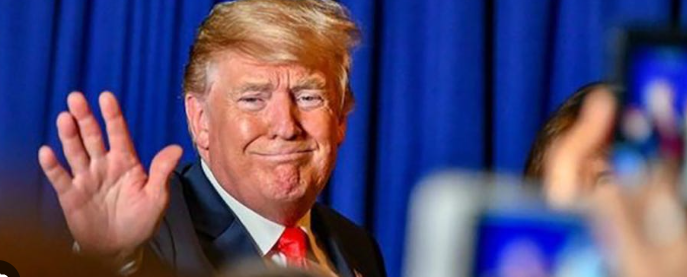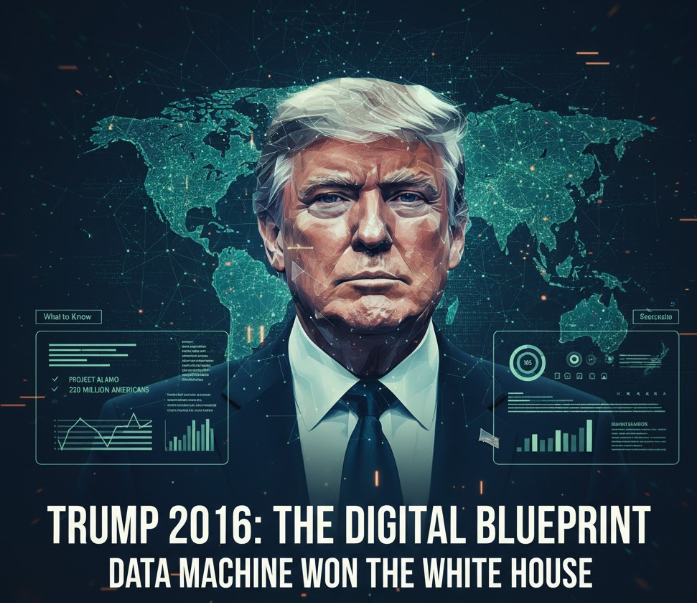The Wall Street Journal and The New York Times show that efficient targeting and real-time engagement defined Trump’s campaign success.
What to Know:
- The Wall Street Journal found 50% of undecided voters used only streaming and podcasts, not cable.
- The New York Times reported Trump targeted 6.3 million persuadables, while Harris targeted 44.7 million, leading to waste.
- Trump’s superPAC spent $80 million on streaming ads, reaching 83% of persuadable voters.
- The Wall Street Journal detailed how Trump’s team used device IDs from credit-card and internet data for precise targeting.
- MAGA Inc. polling showed Trump led by 7 points among streaming persuadables in key battleground states.
The 2024 presidential election marked a decisive shift in how political campaigns allocate resources and engage with voters. Donald Trump’s team, facing a financial disadvantage, developed a highly targeted digital advertising strategy that leveraged streaming services, behavioral analytics, and microtargeting to reach key persuadable voters at a fraction of the cost.
Reports from The Wall Street Journal and The New York Times detail how Trump’s campaign effectively outmaneuvered Kamala Harris’s team, which, despite a substantial financial advantage, relied on outdated television and geographic targeting models. The Trump campaign’s approach was not simply an evolution of past strategies but a fundamental rethinking of modern political advertising.
The Decline of Traditional Political Advertising
Trump’s campaign recognized early in the election cycle that traditional television advertising was no longer the most effective way to reach undecided voters. The Wall Street Journal reported that nearly half of persuadable voters in 2024 did not have cable television and relied exclusively on streaming services for content. Unlike traditional television, which requires campaigns to purchase ad slots based on broad geographic reach, platforms such as Max, Tubi, and Roku allowed for precise, household-level targeting of individual voters.
Understanding this shift, the Trump campaign and its superPAC, MAGA Inc., conducted a 20,000-person survey commissioned by pollster Tony Fabrizio to analyze persuadable voters in battleground states and determine how they consumed political content. The findings were clear: these voters were younger, more diverse, and far less engaged with cable news than in previous election cycles.
Armed with this data, Trump’s team compiled a list of 6.3 million voters across seven key swing states. These individuals were targeted using a combination of streaming ads, direct mail, text messaging, and canvassing efforts. This strategic focus represented a departure from traditional campaign advertising, which has long relied on broad demographic and geographic trends.
The Harris Campaign’s Miscalculation
Despite substantial financial resources, the Harris campaign failed to adjust to the evolving media landscape. The New York Times reported that while Trump’s team focused on a narrow, highly targeted group of 6.3 million persuadable voters, Harris’s campaign aimed its messaging at a far broader audience of 44.7 million people across the battleground states. Rather than leveraging the precision targeting capabilities of streaming platforms, Harris’s team continued to use geographic targeting, treating digital ads in the same way as traditional television buys.
This broad-stroke approach led to significant inefficiencies in ad spending. According to Trump superPAC pollster David Lee, 85% of Harris’s ad budget was wasted on voters who had already made up their minds. In contrast, Trump’s campaign used real-time voter engagement data to continuously refine its outreach, reducing digital ad frequency for voters already exposed through television while intensifying efforts toward those who had not yet been reached.
By the summer, the effectiveness of Trump’s strategy was evident. Internal polling from MAGA Inc. showed that Trump was leading by 7 points among streaming persuadables in four key battleground states—Pennsylvania, Georgia, Nevada, and Arizona—compared to just a one-point lead in the other three battleground states. In Nevada, where Trump’s campaign relied exclusively on streaming ads, he held a six-point advantage among persuadable voters.
The Rise of Behavioral Targeting in Political Advertising
A defining feature of the 2024 election was the Trump campaign’s use of behavioral targeting, a strategy long utilized in commercial marketing but rarely executed at this scale in political campaigns. The Wall Street Journal reported that Trump’s team combined public voter files with purchasable data from credit-card companies, internet service providers, and third-party data brokers to match voters with the device IDs of their smartphones, tablets, and computers. This allowed the campaign to deliver highly customized digital ads directly to individual voters based on their online activity and consumer behavior.
This level of precision extended beyond digital ads. According to the New York Times, the Trump campaign changed the frequency of its ads according to voter engagement; if a person had already seen the campaign's messaging on several platforms, they were not given priority for further outreach. Voters who had already cast early ballots were removed from the digital advertising pool, ensuring that resources were directed only at those who remained undecided or had yet to vote.
The Role of Podcasts in 2024
According to The Wall Street Journal, nearly 50% of undecided voters in 2024 did not have cable and consumed content primarily through streaming services and podcasts. Recognizing this shift, Trump’s campaign invested millions in podcast advertising, embedding ads within trusted long-form discussions to engage a large share of the 6.3 million persuadable voters it had identified.
The New York Times reported that Harris’s campaign spent 60% more than Trump on television ads in September yet failed to match his multi-million-dollar podcast investment, missing a key opportunity to reach voters disengaged from traditional media.
Wrap Up
The results of the 2024 election suggest that the winning formula for future campaigns will be a combination of advanced analytics, real-time behavioral data, and precision digital outreach. While Harris’s campaign had the financial resources to dominate traditional ad spending, it ultimately could not match the Trump team’s ability to deploy resources with near-surgical precision.
As political advertising continues to evolve, campaigns will need to embrace data-driven targeting or risk irrelevance. The 2024 election demonstrated that the future of campaign strategy is not about spending more—it is about spending smarter.





